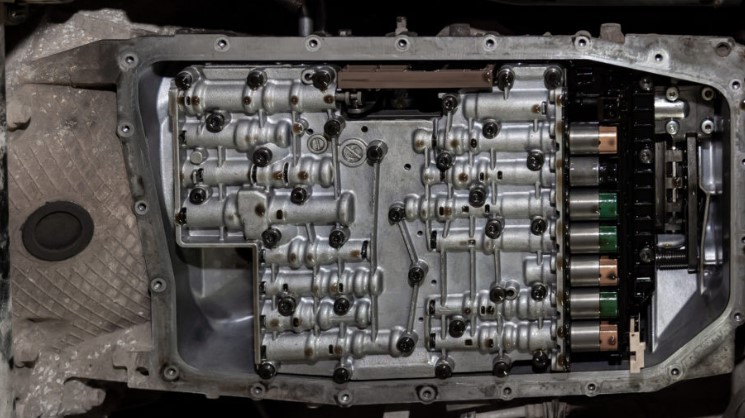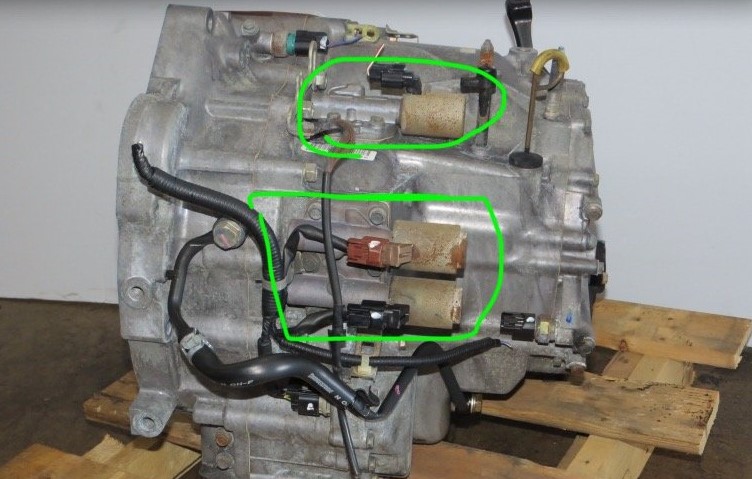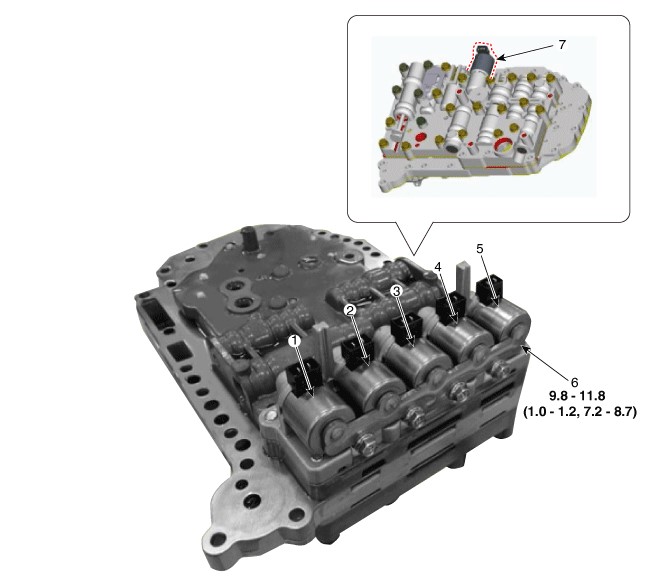Have you ever wondered about the magic behind smooth gear shifts? It’s the shift solenoid. Immersed in transmission fluid, these solenoids face the brunt of temperature fluctuations. They’re not invincible. Over time, they wear out. But, as mentioned in your vehicle’s manual, regular servicing can extend their lifespan.
💥
Spotting a Faulty Shift Solenoid

If your vehicle starts showing these signs, it’s time to consult a mechanic:
- Check Engine Light Illumination: The Transmission Control Module (TCM) monitors the solenoids. Spot an issue? It’ll alert the engine’s computer.
- Inconsistent Shifting: Solenoids control fluid flow for gear shifting. Any malfunction can lead to hard, soft, or even delayed shifts. Sometimes, the engine might rev up, but the vehicle’s speed remains unchanged.
- Transmission Hiccups: A malfunctioning solenoid might hinder fluid pressure, preventing gear shifts or even causing the vehicle to be stuck in neutral.
- Limp-home Mode Activation: If the TCM senses a solenoid issue, it might restrict the vehicle to second or third gear, signaling a problem with warning lights.
Addressing the Issue
Diagnosing the root cause is crucial. Various factors can mimic solenoid problems. Sometimes, it’s just a faulty solenoid that needs replacement. But, in high-end vehicles, the TCM might be integrated into the valve body, making replacements a tad expensive. Post-repair, the TCM might require reprogramming.
Diving Deeper: The Shift Solenoid’s Functionality
As you cruise, the vehicle’s computer calculates the best gear for your speed. The TCM, acting as the transmission’s brain, powers a shift solenoid to facilitate gear shifts. Within the solenoid lies a plunger encased by a magnetic coil. The TCM’s signal activates this coil, moving the plunger and directing the transmission fluid, enabling gear shifts. Typically, a vehicle houses multiple solenoids within its transmission valve body. A malfunction in even one can disrupt the vehicle’s performance.
The Ford F-150 stands tall as a global truck icon. But even this titan isn’t immune to issues, notably the Ford F150 transmission solenoid problems.
Zooming into Ford F150 Transmission Solenoid Problems

In this piece, we’ll explore:
- The essence and workings of a transmission solenoid.
- Causes behind solenoid failures.
- Recognizing a failing F-150 solenoid.
- The financial aspect of addressing a faulty solenoid.
Transmission Solenoids Unveiled
What are they? Think of solenoids as electromagnetic valves. Transmissions are often bundled in a “solenoid pack,” directing transmission fluid flow. This fluid exerts pressure on the transmission’s gears, enabling automatic gear shifts.
How do they function? At their core, solenoids transform electrical signals into mechanical actions. They regulate transmission fluid movement, ensuring optimal performance. Signals from the Engine Control Unit (ECU) or Transmission Control Module (TCM) control these solenoids, ensuring seamless gear shifts.
👀Look at this:
Why Solenoids Matter
The ECU, often termed the vehicle’s “brain,” collaborates with the TCM to ensure smooth gear shifts. They monitor various parameters like wheel speed and engine RPMs. A malfunctioning solenoid can disrupt this harmony, compromising vehicle performance.
Decoding Solenoid Failures
Despite their robust design, solenoids can falter. Common culprits include contaminants like oil or dirt and electrical glitches. Sometimes, the issue might be a simple blown fuse. But, if the solenoid’s wiring is intact, it might hint at a malfunctioning ECU or TCM, which can be a pricier problem.
Recognizing a Failing F-150 Solenoid
A malfunctioning solenoid can manifest as:
- Unusual shifting patterns.
- Inability to downshift.
- Getting stuck in a specific gear.
Any significant shift in your F-150’s gear-shifting behavior warrants a mechanic’s attention.
🚀Recommended article:
Cost Implications of Solenoid Repairs
While solenoids are accessible in an F-150, it’s best to let professionals handle replacements if you’re unfamiliar with drivetrain operations. The cost varies based on whether you’re replacing a single solenoid or the entire block. Labor costs can range between $200-$400, with the total repair bill potentially reaching $1100.
While solenoids seem insignificant, they are pivotal in ensuring your F-150 operates seamlessly.
